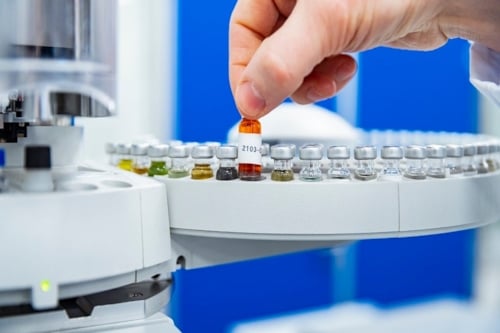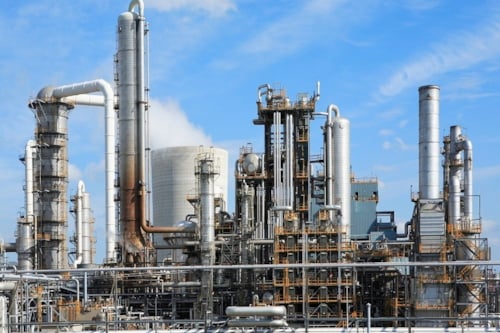
Gas imaging camera: Quick and efficient detection of leaks in bio methane or biogas installations
Receive a quote tailored to your needs
Compared to handheld detectors typically used for methane leak detection, the gas camera offers numerous advantages. It allows measurements from up to 100 meters away, enabling comprehensive inspection of a biogas installation and any connected gas-consuming systems from multiple vantage points. Even hard-to-reach areas can be assessed. This means the entire installation can be checked for gas leaks within two to four hours, whereas using a handheld device could take up to two days.
Versatile application
Camera inspections are highly versatile and provide significant added value for all owners and operators of biogas systems, including bio methane producers, water authorities and environmental agencies. For these stakeholders, inspections are vital not only from an operational perspective but also for safety and methane emission control. Typical applications include installations at industrial digestion plants or landfills, where reliable visual monitoring is essential for safe and efficient operations.
The gas camera can be used to assess the current condition and functioning of components such as:
- Sludge tanks
- Gas holders
- Pipework
- Valves
- Fittings and accessories
- Landfill gas extraction systems
- Foil sealing integrity, etc.
Inspection results support maintenance planning
The gas camera detects methane gas leaks and can also identify leaks around components such as valves and fittings. This provides valuable insights for asset owners or operators when planning maintenance or repairs. During inspections of green gas or biogas installations, Kiwa uses a classification system to assess the severity of findings. Ultimately, it is up to the client to determine how these timeframes and insights are incorporated into their maintenance strategy.
Inspection results support maintenance planning
The gas camera detects methane gas leaks and can also identify leaks around components such as valves and fittings. This provides valuable insights for asset owners or operators when planning maintenance or repairs. During inspections of green gas or biogas installations, Kiwa uses a classification system to assess the severity of findings. Ultimately, it is up to the client to determine how these timeframes and insights are incorporated into their maintenance strategy.
Fault Class 1 (as soon as possible):
Immediate action is required. If the leak poses an increased risk to individuals and/or if the explosion hazard is elevated, immediate repair is necessary.Fault Class 2 (within six months):
Action must be taken within a period of 6 months to find a solution to eliminate the deviation and/or ensure the safety of the installation.Fault Class 3 (during next routine maintenance):
No immediate action is required. Repair can take place during the next scheduled maintenance.Biogas and bio methane
Biogas plays an important role in making our energy supply more sustainable. When produced in a carbon-neutral way, biogas can be used in combined heat and power plants or upgraded to bio methane (biogas refined to natural gas quality) and injected into the national gas grid. Kiwa’s gas experts monitor gas quality and provide advice on both production and usage.
Kiwa can also perform gas analyses for you!
Want a fast and complete overview of your green gas or biogas installation? Let Kiwa simultaneously, efficiently and professionally perform a gas analysis and a gas leak inspection.
Getting started with biomethane?
Want to know more about injecting biomethane? Discover the details in our step-by-step guide ‘How to start as a biomethane injector’.
Gas analysis by ISO-certified laboratory
If your organization works with gases, it may be important to know their calorific value or Wobbe Index. In addition, it's crucial that the gas does not contain harmful trace components. At Kiwa, you can rely on expert analysis of a wide range of gas properties: volume, quality, (main) components, higher hydrocarbons, aromatic hydrocarbons, halogenated hydrocarbons, sulfur compounds (such as H₂S), siloxanes and THT odorization.

Analysis odorant in natural gas, hydrogen gas and other gases
Natural gas, hydrogen gas and many other gases are naturally odorless. This can cause dangerous situations, for example if a leak or other incident occurs. Gases that are distributed via the Dutch gas network must therefore be scented with a so-called odorant.

Industrial Gas Systems
Gas systems that are used in industrial processes must be suitable for use and demonstrably comply with all environmental and safety requirements.

Advice on gas measurement
Gas measurement takes place in the entire gas supply chain from gas production to delivery to industry and large business consumers and gas for household use. All the market parties benefit significantly (in financial terms) from correct and accurate gas measurement. Kiwa Technology advises these market parties.
